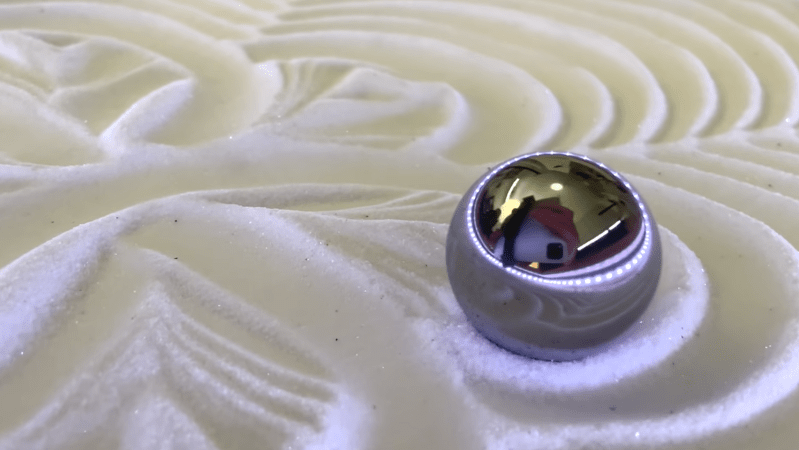Many of us have marveled at art installations that feature marbles quietly and ceaselessly tracing out beautiful patterns in sand. [DIY Machines] is here to show us that it’s entirely possible to build one yourself at home!
The basic mechanism is simple enough. The table uses a Cartesian motion platform to move a magnet underneath a table. On top of the table, a metal sphere attached to the magnet moves through craft sand to draw attractive patterns. An Arduino and Raspberry Pi work together to command the stepper motors to create various patterns in the sand.
Low-cost pine is used to build most of the table, with oak used for the attractive bare wooden top. RGB LEDs surround the sand surface in order to light the scene, with options for mad disco lighting or simple white light for a subtler look. Other nice touches include sitting the craft sand atop a layer of faux leather, so the ball moving through the sand doesn’t make annoying crunching sounds as the ball moves.
It’s a great build that focuses on the smaller details like noise that can make a big difference to the final experience. We’ve seen similar projects before, too. Video after the break.
















If you really want easy, use an off-the-shelf 3D printer controller board, corexy belt arrangement, and Sandify to generate gcode patterns. No programming is needed. The controller thinks the table is a 3D printer that has no fans, heaters, extruder, or Z-axis. Configuration is very simple.
Here’s hoping Dr. Rehorst will see this. I’ve been studying the sand table referenced here as well as Dr. Rehorst’s robust rendition (Arrakis) and I’d like to get some input before I start spending money on the wrong things. This table uses linear guide rails and carriers, much smaller than the extrusions used in Arrakis. Are the MGN12 linear guides adequate for a 2′ x 4′ table or are more rigid guides more appropriate? Arrakis uses substantially larger motors than Lewis recommends here. Again, for occassional home use, are the servos necessary? I’m confused by the crossed belt paths in the corexy configuration versus the more direct and simpler routing in this project. Are they essentially equivalent? I haven’t found anything that compares the two methods, only that the corexy system is designed the way it is. I’m not sure why. If a 3D printer controller board is used as suggested, does it replace the Arduinos, Raspberry Pi and CNC Shield? Has that been implemented and documented somewhere? Are the pattern files interchangeable between the two designs?
One more suggestion- use optical endstops so they don’t make any noise every time the pattern sends the ball through the home position.
Those miter joints mate.
Instead of sand what about oil and mica flakes? Should be more quiet.
Baking soda is quieter than sand, captures more detail on the patterns, is cheaply available everywhere, doesn’t attract bugs, and doesn’t get lumpy.
Oil is an interesting idea as long as the top cover is high above the sand/mica/whatever or you keep speed down. At high speeds the rotating of the ball will fling oil and if the top cover is too close you’ll have to clean it a lot.
Isn’t baking soda hygroscopic? It would turn rock hard eventually.
That would make a canny Etch-A-Sketch.
“Sisyphus Magic Sand Coffee Table”
What in the hell does a sand table have to do with a venereal disease?
Spending enough time on the project is a good preventative.
With this table, you can finally get out your gonorrhea chairs.
You’re thinking syphilis.
Sisyphus is the guy rolling a boulder up a hill for eternity.
A DIY Kit (like 3D Printers) would be awesome for people nor very skilled in electronic and mechanic
Can a table like this accept custom programming for all different types of designs? Like maybe from a USB?
Well, this is great for the wheel, but let’s reinvent it. Kidney shaped, or a regular rectangle. Anyone that? Looking at a larger unit, roughly a 2.5’x3.5’? A sort of coffee table size
Can anyone tell me what sand I need to order? I am in the UK